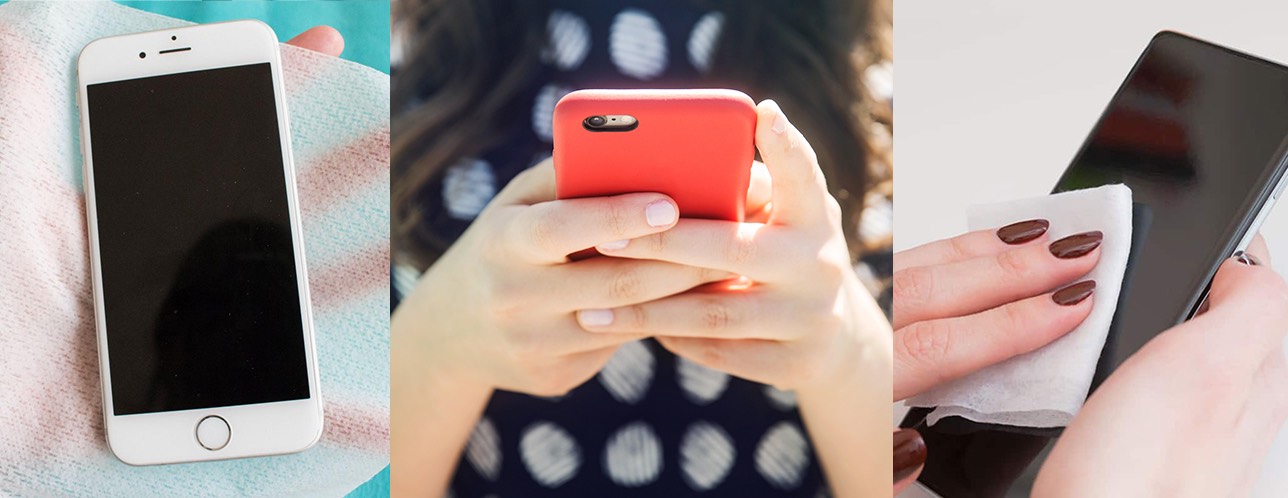Since the COVID-19 outbreak, we’ve all made it a point to stay healthy by keeping our personal hygiene in tip-top condition — making sure we wash our hands with soap and generally taking extra care in staying bacteria-free. Yet, even with all the focus on ensuring we stay free of germs, we often tend to overlook other items we interact with daily, which can turn into a breeding ground of germs and bacteria when left as it is.

We’re talking of course about our phones — the greatest invention of our generation that most of us would not be able to live without. Now, if your social media feed is anything like ours, you would have probably seen an ad or two from brands like Casetify, who have been actively promoting the effectiveness of their UV Phone Sanitisers that claim to disinfect your phone and keep it germ-free. While the idea itself is one that could benefit us in the current climate, it is most definitely not the only method you can use to keep your phones germ-free.
In fact, there are loads of cost-effective methods that have been pre-approved by tech companies that you can use in place of a $100 machine that doesn’t necessarily eliminate germs and bacteria. Rather than spending on an item that may not prove useful in the long run, why not opt for an affordable method which you can put together for just a small fraction of that amount?
The Need to Sanitise Your Phone
To put it simply, it is common sense that we would need to keep our phones clean, since it’s the device that we interact with on a daily basis.
It has been reported that an average person touches their phone almost 3,000 times a day with heavier users doubling their interaction to 5,427 times daily. This is why it is important to give our phones a good clean especially when you take into account the places that your phone has been with you. Even if you upkeep your own personal hygiene by washing your hands with soap, touching your unclean phone would be like touching a toilet seat that’s 10 times dirtier.

The human skin is naturally covered in oils and microbes that are a sort of natural bacteria that may not have any direct negative health consequences but still gets passed on to your phone each time you reply to a WhatsApp message or scroll through Instagram. The grease together with other organic material that we may have obtained from public surfaces as well as the heat from our phones further allows the bacteria and viruses to survive.
Apart from environmental contaminants, viruses can also spread on phones if a person sick with the flu accidentally coughs onto their device and hands it off to a friend without much concern over the infection-carrying bacteria that have already gotten onto the phone.
Cost-Effective Phone-Cleaning Methods You Can Use At Home

With DIY Disinfecting Solution
Most phone users are known to use a soft microfibre cloth, which is good enough to remove germs though not entirely. For a deeper clean, it is recommended that a combination of 60% water and 40% isopropyl rubbing alcohol be used. Simply mix the ingredients together, and then dip a cloth into the solution before wiping it gently across your phone. It’s best to do this at least twice a day to ensure you don’t give the bacteria and germs any room to grow.
With Disinfecting Wipes
Another good way to clean your phone, that has been pre-approved by Apple, is the use of disinfectant wipes that contain 70% of isopropyl alcohol. Get yourself a pack of antibacterial wipes and give your phone a good wipe at the end of the day. After, wipe it dry with a clean soft lint-free cloth or microfibre cloth. Don’t use paper towels as it can be far too abrasive and might even end up leaving scratches on your screen.

With A Damp Cloth
If you have a water-resistant phone that is rated IP67 and above, you can opt to use a damp cloth to clean your phone though it is important to avoid getting moisture in any opening. After, make sure to dry your phone with a dry, soft cloth to remove the water. In the event where you had gotten some moisture in the area where the speakers and ports are, make sure to pat them dry.
Avoid Using These to Clean Your Phone

While a tough cleaning solution and disinfectant may seem like the ideal way to clean your phone, it will, in fact, cause more damage to your phone. Bleach, vinegar, alcohol, and harsh disinfectant chemicals can are not suitable for cleaning the glass front (and back) of your phone as they will eat away at the oleophobic coating that helps your phone fight fingerprint smudges.
Straight alcohol, or 100% alcohol is also not a viable solution to use as it can strip the oleophobic and hydrophobic coatings that are used to keep oil and water from damaging your display and other ports.
📱 KEEP YOUR SMARTPHONES CLEAN AND GERM-FREE! 📱











You must be logged in to post a comment.